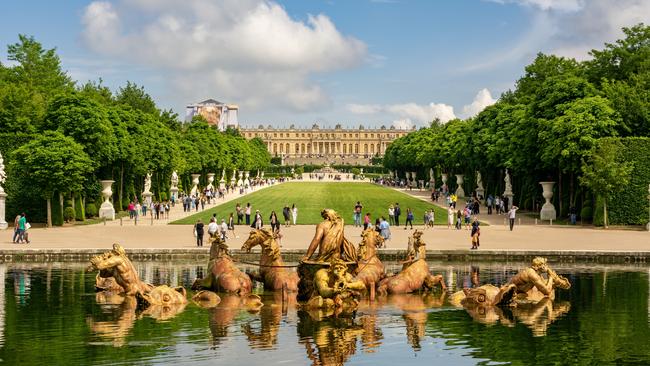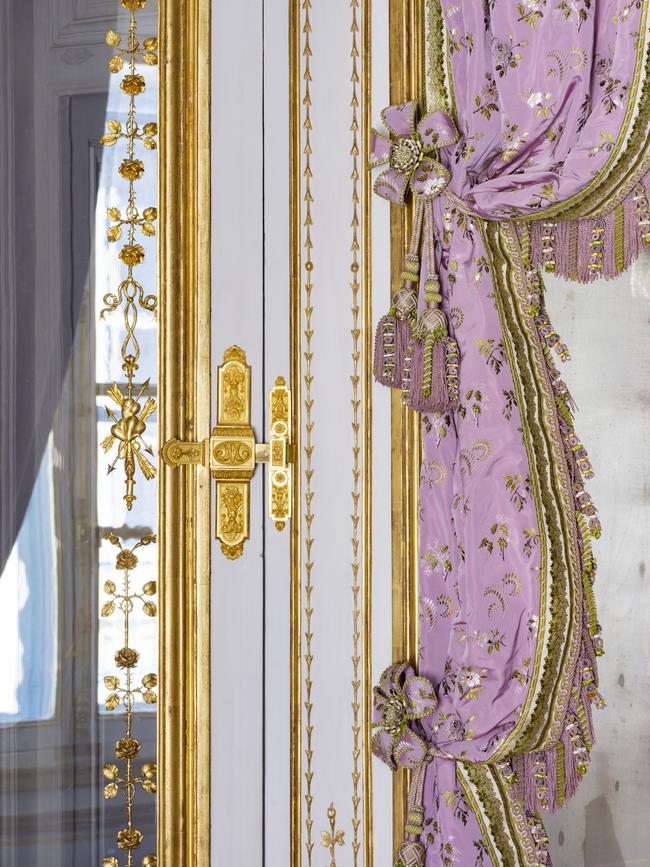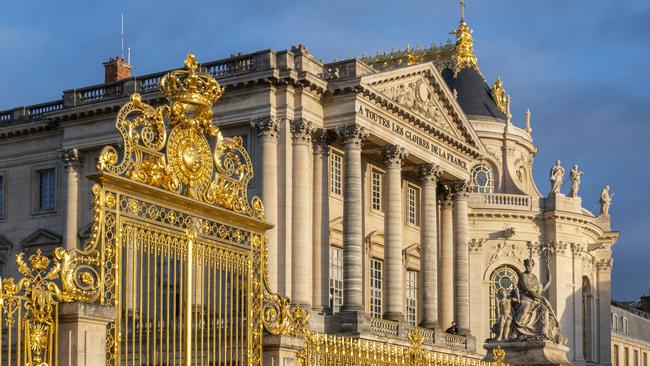How to visit Marie-Antoinette’s private rooms
It took two decades to restore the queen’s chambers at the Palace of Versailles and we show you inside for the first time.

‘I have a surprise for you,” says Barnabe Chalmin, my guide at the Palace of Versailles. Another one? An hour into a tour of Marie-Antoinette’s private chambers and my quota of wow, amazing and other exclamations is almost exhausted.
My awe is not reserved for the ornate furniture, rich silks, gilt walls and porcelain tableware. Those I expected. Everything in these chambers was commissioned by the notoriously picky Marie-Antoinette. It is instead the stories that the 14 rooms contain. At a time when royal spectacle was enshrined in court etiquette (queens gave birth in public, for example) these chambers were purely for Marie-Antoinette’s personal relaxation. Touring them draws you closer to the truth of Louis XVI’s Austrian wife and the couple’s reign at the pointy end of France’s “ancien regime”.


The library reveals her taste in books. “She wasn’t a big reader but she did like poetry and theatre,” says Chalmin. “Novels too, but she wouldn’t read philosophers like Rousseau or Voltaire; she wanted something light.” In the Meridienne Room, a simple white silk was originally proposed for the curtains and upholstery. Not a chance, said Marie-Antoinette. Blue was suggested; again, no. Exasperated, the queen asked her private architect to design a new pattern and colour leading to the flowered lilac silk we see today. The silk she commissioned for the Gold Room, meanwhile, cost £250,000 which, in the 1770s, was the cost of a medium-sized castle in the countryside.
It was incredibly audacious. Marie-Antoinette was just 14 years old when she was stripped naked on the French-Austrian border, put in a French dress and wedded to the 15-year-old dauphin (heir apparent), Louis XVI. Her friends and even her dog were turned back. Yet just a few months later at Versailles, the child bride “displayed extraordinary taste, self-confidence and boldness in the field of decor and interior design”, says the heritage curator of the queen’s private apartments, Helene Delalex. “She commissioned with childlike omnipotence and only the Revolution put an end to it.”

The restoration of her private chambers took two decades. Its triumphant completion last June further fuelled the cult of Marie-Antoinette. While her other Versailles hotspots, Petit Trianon and Queen’s Hamlet, require a trek through Versailles’ gardens, her private chambers are tucked into the main palace. Yet due to their precious interiors, narrow corridors and small rooms, tours are capped at 10 people, keeping the big tour groups at bay.
To highlight the exclusivity, Chalmin has saved the piece de resistance until last. He produces a cartoonishly large key and opens a door on to the shimmering gold of the queen’s bedchambers. A throng of tourists file by on the opposite side of the room. A few point and murmur when the secret door opens and my curious head pops out.
This door is legendary. It features in Sofia Coppola’s 2006 film, Marie-Antoinette, when actor Kirsten Dunst follows a maid through it. It is also the door through which the real-life queen of France fled the revolutionaries’ fury on October 6, 1789, after a mob stormed the palace. But before that, for 18 years, it was her door to freedom.
“The first thing to know about the relationship Marie-Antoinette had with the palace is that she hated it,” says Chalmin. “She always had a taste for freedom and in between official palace ceremonies she wanted space to rest.”

Whenever possible, Marie-Antoinette came here to escape the demands and irritations of being in public. Which is precisely its role for visitors now as the ultimate Versailles hack to shake the hectic crowds.
During the Revolution, many wanted to destroy Versailles as a symbol of the monarchy. It survived because palace-destroying is expensive and time consuming. Later, Napoleon wanted to transform it into an imperial residence. “His plans were hideous,” says Chalmin. “Thank God, he did nothing.” In 1837, King Louis-Philippe’s vision to open Versailles as a museum was fulfilled.
It’s a constant work in progress. All the furniture was sold during the Revolution but, luckily, the French reputation for red tape goes way back. The Revolutionaries kept fastidious sales records that help today’s curators confirm provenance. “Almost every month, we find a piece of porcelain or a chair and it costs us anything from €5000 to €6.5m,” says Chalmin. While the palace can’t buy back items held in museum collections in New York and London, it has a powerful card up its sleeve.

The French law of pre-emption allows government-run entities to buy culturally significant items out from under the highest bidder after the hammer falls. Chalmin points to two gold and lilac armchairs in the Meridienne Room. “One of those was bought at an auction house a couple of years ago for almost €2m,” he says. “Say you’re the highest bidder at Sotheby’s and you get the armchair. In France, if a curator is in the room, they can say ‘in the name of the French museums, I pre-empt this chair for the benefit of the Palace of Versailles’ and the buyer cannot say anything.”
Buybacks are complicated by cost. As with Marilyn Monroe, anything that once belonged to Marie-Antoinette fetches astronomical prices. So reviled by the French people in her life’s final years, Marie-Antoinette’s martyrdom began just 20 years after she was guillotined in 1793.

The final room features a portrait of the imprisoned queen. It was painted in the 1850s, when the second wave of Marie-Antoinette mania began. “People started to consider her a martyr, and not as the one who ruined France. Still today, lots of visitors come to Versailles, not to see the palace or learn about the kings, but to see Marie-Antoinette’s home,” Chalmin says. “It’s a whole dedication, almost a religion.”
If you love to travel, sign up to our free weekly Travel + Luxury newsletter here.




To join the conversation, please log in. Don't have an account? Register
Join the conversation, you are commenting as Logout